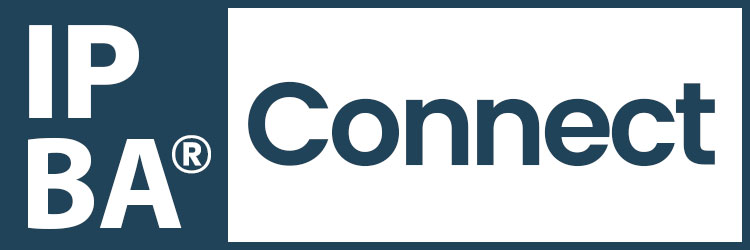
Organizing intellectual property👉 Creations of the mind protected by legal rights. (IP) management in a company is a strategic imperative that transcends mere legal compliance; it is about cultivating a culture where IP is recognized as a fundamental driver of business value. Effective IP management👉 Strategic and operative handling of IP to maximize value. requires deep integration across the organization, a clear conceptualization of the IP department’s evolving roles, and a judicious balance between insourcing and outsourcing IP work.
Integrating IP Management in a Company
Integrating IP management in a company begins with elevating its status from a purely legal or administrative function to a core business function. This involves embedding IP considerations into every stage of the product lifecycle, from initial research and development (R&D) to market launch and even product discontinuation. The first crucial step is fostering a pervasive “IP culture” across the entire organization. This means educating all employees, particularly those in R&D, engineering, marketing, and sales, about the importance of identifying, protecting, and respecting IP. Workshops, training programs, and regular communications can raise awareness about what constitutes patentable inventions👉 A novel method, process or product that is original and useful., the value of trade secrets, the significance of trademarks, and the risks of infringing on others’ IP. This educational initiative ensures that valuable ideas are not inadvertently disclosed or overlooked, and that employees understand their role in protecting the company’s intangible assets.
Beyond awareness, integration requires establishing clear processes for IP identification and capture. This involves creating mechanisms where employees can systematically document their innovations, whether through invention disclosure forms or dedicated digital platforms. Regular IP review meetings, involving R&D leaders, business unit heads, and IP professionals, can be instituted to evaluate new ideas for patentability, commercial potential, and alignment with business strategy. This proactive approach ensures that IP is considered early in the innovation👉 Practical application of new ideas to create value. pipeline, allowing for timely filing decisions and strategic portfolio development. For instance, in an agile development environment, IP professionals might be embedded within innovation teams, offering real-time guidance on what to document and how to best position new features for protection.
Furthermore, integrating IP means aligning IP strategy👉 Approach to manage, protect, and leverage IP assets. with overall business strategy. The IP portfolio should not be an arbitrary collection of legal rights but a carefully constructed set of assets that supports the company’s competitive advantage. If the business strategy is to dominate a particular market segment, the IP strategy should focus on building a dense patent👉 A legal right granting exclusive control over an invention for a limited time. thicket around key technologies in that area. If the strategy is to license technology, the IP team needs to focus on building a robust portfolio of licensable assets. This strategic alignment requires close collaboration between the IP department and senior management, business units, and development teams. IP intelligence, derived from patent landscapes and competitive analysis, can also feed back into R&D and business development, informing future innovation directions and potential M&A targets. The goal is for IP to be a proactive driver of strategy, not just a reactive legal function.
Organizational Concepts for IP Departments
The IP department’s role within a company has evolved significantly, reflecting the growing recognition of IP as a critical business asset. It can be conceptualized in several ways, each emphasizing a different aspect of its contribution to organizational value.
Firstly, an IP department can function as a protection center. This is arguably its most traditional and fundamental role. As a protection center, the IP department is responsible for safeguarding the company’s innovations and brands through various legal mechanisms. This includes drafting and prosecuting patent applications, registering trademarks and copyrights, and managing trade secrets. The focus here is on securing legal rights, ensuring compliance with IP laws in various jurisdictions, and establishing barriers to entry for competitors. This role involves meticulous documentation, technical understanding to translate inventions into legal claims, and a deep knowledge of national and international IP laws. The success of the protection center is measured by the strength and breadth of the IP portfolio, its enforceability, and its ability to deter infringement👉 Unauthorized use or exploitation of IP rights.. For example, a pharmaceutical company’s IP department acts as a strong protection center by securing patents for new drugs, which are vital for recouping R&D investments and maintaining market exclusivity.
Secondly, an IP department can be operated as a differentiation center. In this capacity, IP is used not just to protect, but to actively create and maintain competitive differentiation in the marketplace. This involves working closely with marketing and product development teams to leverage IP assets to create unique selling propositions. Trademarks, for instance, are crucial for branding and consumer recognition, differentiating a company’s products from those of competitors. Patents, beyond offering protection, can be used to signal technological leadership and innovation to customers, investors, and partners. The IP department, as a differentiation center, actively seeks to identify core unique selling propositions and ensure they are adequately protected and communicated. This might involve patenting specific features that provide a clear competitive advantage, developing a strong brand👉 A distinctive identity that differentiates a product, service, or entity. identity through robust trademark👉 A distinctive sign identifying goods or services from a specific source. protection, or even publicizing a patent portfolio to enhance the company’s reputation as an innovator.
Thirdly, IP departments increasingly function as profit centers. This role moves beyond cost avoidance and defensive protection to actively generating revenue from IP assets. This involves identifying opportunities for licensing👉 Permission to use a right or asset granted by its owner. out technologies, selling non-core patents, or engaging in strategic cross-licensing agreements to gain access to third-party technologies. As a profit center, the IP department must possess strong business acumen, negotiation skills, and a deep understanding of market opportunities. It conducts valuations of IP assets, identifies potential licensees, and structures licensing deals that generate recurring revenue streams. For instance, a technology company might license its patented software architecture to other firms, transforming its IP from a cost center into a significant source of income. This also includes strategically using IP in litigation to gain favorable settlements or market positions, which, while costly, can ultimately protect or generate substantial profit.
Finally, an IP department can serve as an asset center. This encompasses a holistic view of IP as a critical corporate asset class, akin to financial or physical assets. As an asset center, the IP department is responsible for the overall management, valuation, and strategic deployment of the entire IP portfolio. This involves regular auditing of IP assets, assessing their commercial relevance, tracking their lifecycle, and making informed decisions about which assets to maintain, expand, or divest. It also includes using IP as collateral for financing, integrating IP value into mergers and acquisitions due diligence, and contributing to overall corporate valuation. The IP department, in this role, provides insights to senior management on the strategic value of the IP portfolio, ensuring that it is optimized to support the company’s long-term growth and competitiveness. For example, during an acquisition, the IP department would rigorously evaluate the target company’s patent portfolio, trademarks, and trade secrets to determine their strategic value and potential risks.
Comparing Outsourcing and Insourcing of IP Work
The decision of whether to insource or outsource IP work is a critical strategic choice, balancing cost efficiency, specialized expertise, control, and responsiveness. Both approaches have distinct advantages and disadvantages.
Insourcing IP work means maintaining an internal IP department or specialists within the company. A significant advantage of insourcing is deeper institutional knowledge and context. In-house IP professionals develop an intimate understanding of the company’s technology, business strategy, and culture. This enables them to provide more tailored, proactive, and commercially relevant IP advice. They are readily available for immediate consultation, fostering faster communication and responsiveness to internal stakeholders. This proximity facilitates seamless integration of IP strategy with R&D and business development, enabling proactive IP identification and risk management👉 Process of identifying, assessing, and controlling threats to assets and objectives.. Furthermore, insourcing allows for greater control over IP quality and strategy, ensuring that IP filings and decisions directly align with corporate objectives. It also helps to retain proprietary knowledge internally, safeguarding sensitive information more effectively than when it’s routinely shared with external parties. Over the long term, insourcing might also prove to be more cost-effective for high-volume IP work, as the fixed costs of an in-house team can be amortized over a larger number of projects, avoiding variable external counsel fees.
However, insourcing also presents challenges. The cost of building and maintaining a highly specialized in-house IP team can be substantial, especially for companies with smaller IP portfolios or fluctuating IP needs. It requires investing in salaries, benefits, office space, and specialized IP management software. Finding and retaining top-tier IP talent, particularly those with diverse technical and legal expertise, can also be difficult and competitive. An in-house team might also face limitations in terms of breadth of expertise across all jurisdictions or specific technical fields if the company’s innovation spans a wide range. Furthermore, an in-house team might sometimes lack the independent perspective that an external firm can offer, potentially falling victim to internal biases.
Outsourcing IP work typically involves engaging external law firms, IP consultants, or specialized IP service providers. A primary advantage of outsourcing is access to specialized expertise and broader resources. External firms often have a larger pool of attorneys with diverse technical backgrounds (e.g., biotechnology, software, electrical engineering) and extensive experience across various industries and global jurisdictions. This allows companies to tap into niche expertise as needed, without the overhead of retaining full-time specialists. Outsourcing offers flexibility and scalability, allowing companies to ramp up or down IP services based on specific project needs or fluctuating workloads, which is particularly beneficial for companies with uneven innovation cycles or limited budgets. It can also provide cost efficiency for low-volume or sporadic IP needs, as companies only pay for the services they consume. External counsel often provides an independent perspective, as external IP experts stay abreast of the latest legal developments and best practices, bringing valuable outside insights.
Nonetheless, outsourcing comes with its own set of disadvantages. A significant concern is the lack of deep institutional knowledge that external firms possess. They may take longer to understand the company’s specific technologies, business goals, and internal nuances, potentially leading to less tailored advice or the need for extensive client education. This can result in slower communication and responsiveness compared to an in-house team, as external firms manage multiple clients. There is also an inherent risk👉 The probability of adverse outcomes due to uncertainty in future events. of losing control over IP strategy and quality if the external relationship is not well-managed, as external firms might prioritize their own processes or billable hours. Confidentiality and data security are heightened concerns when sensitive intellectual property information is shared with external parties. Finally, the cumulative cost of external counsel can be higher in the long run for companies with high-volume IP needs, due to hourly billing rates and potential inefficiencies in external project management.
In conclusion, the effective organization of IP management is a dynamic interplay of strategic integration, conceptual clarity regarding the IP department’s evolving roles, and a pragmatic choice between insourcing and outsourcing. Companies often find that a hybrid approach, combining a lean internal IP team for strategic oversight, integration, and core business knowledge, with external specialists for surge capacity, niche expertise, and international filings, offers the most robust and flexible solution for navigating the complexities of modern IP in a competitive global landscape. The ultimate goal is to transform IP from a necessary overhead into a powerful engine for innovation and sustained business success.
